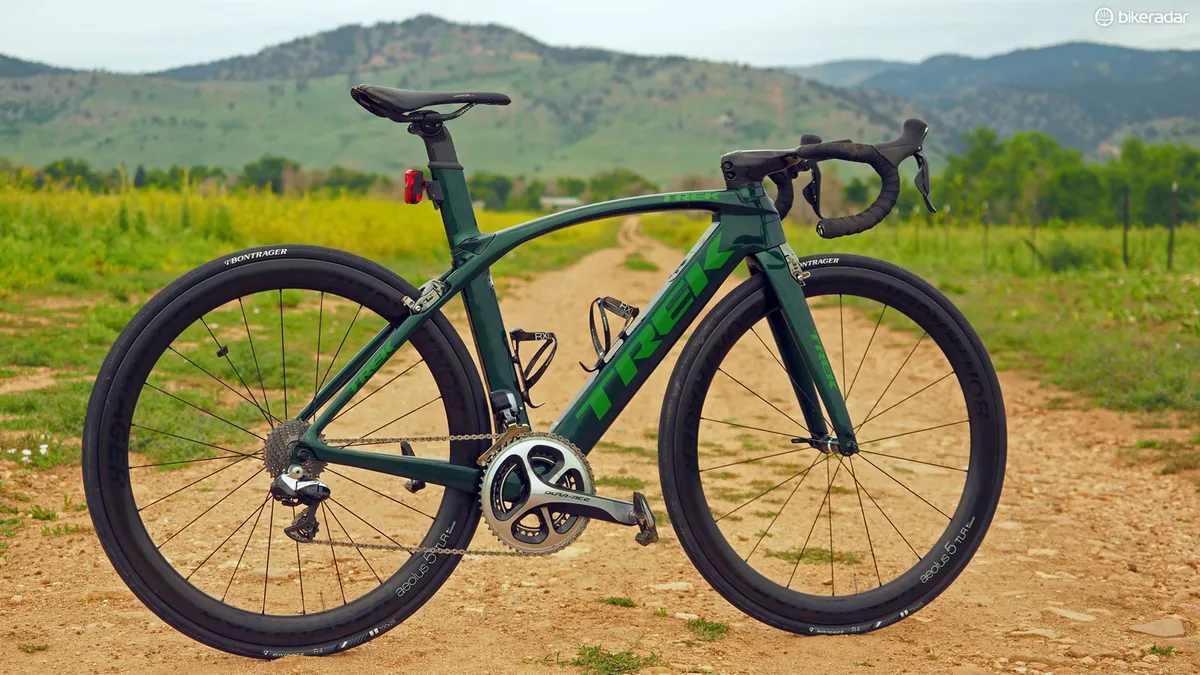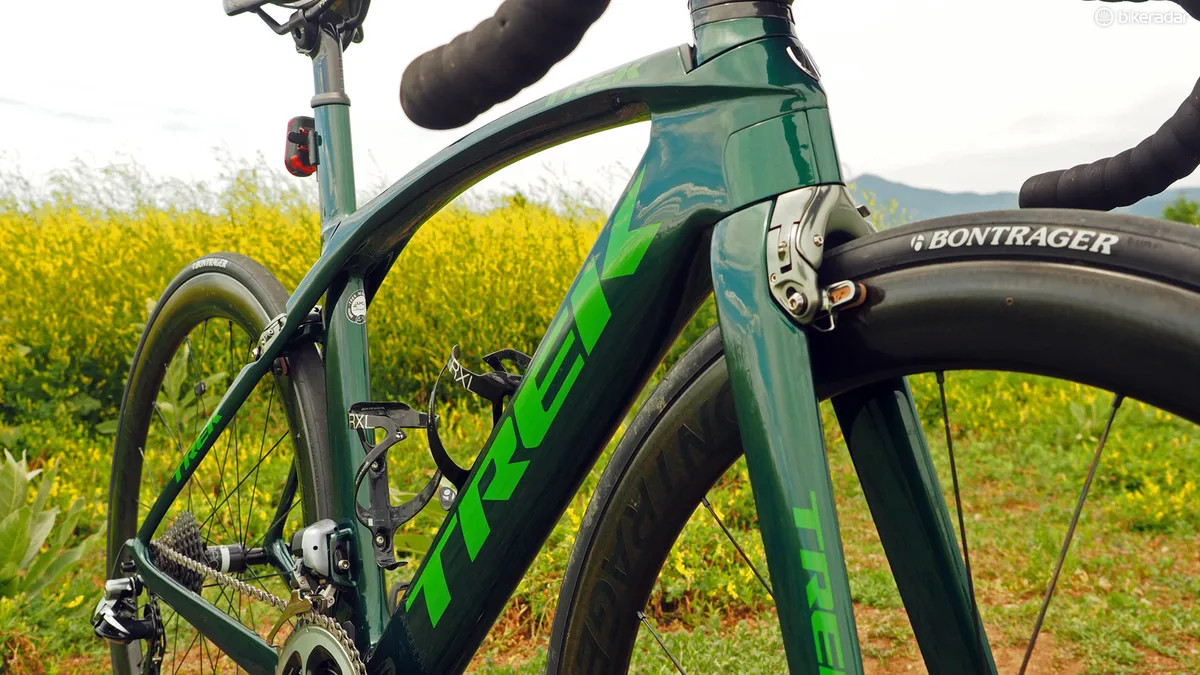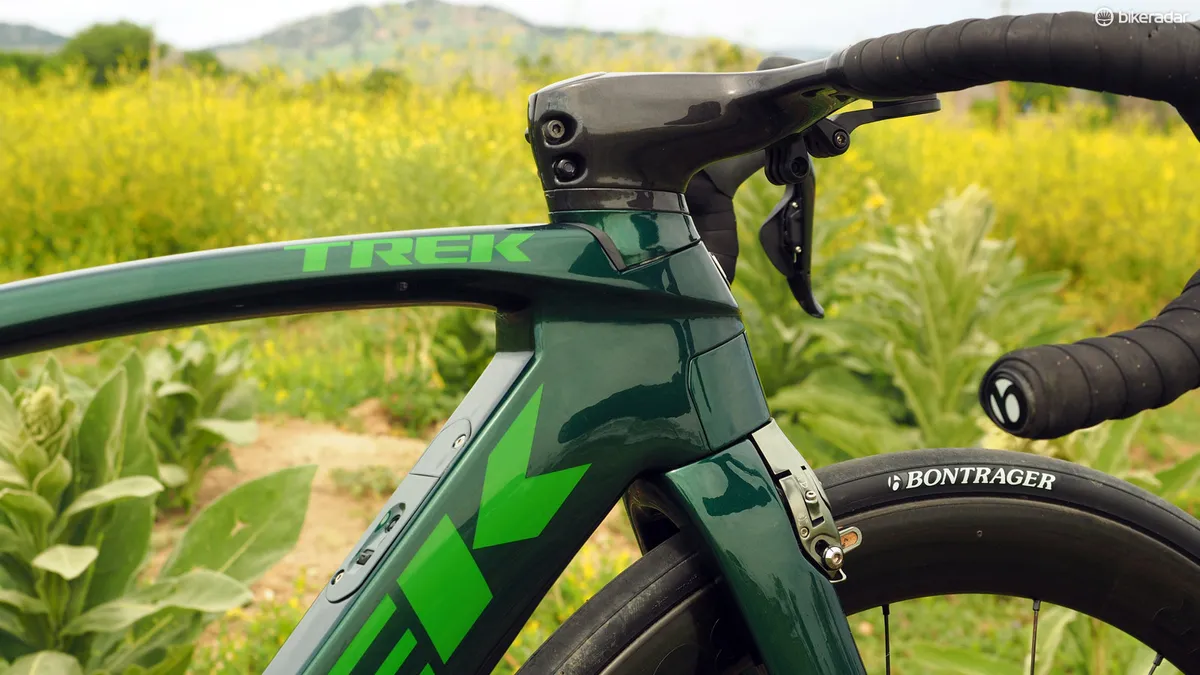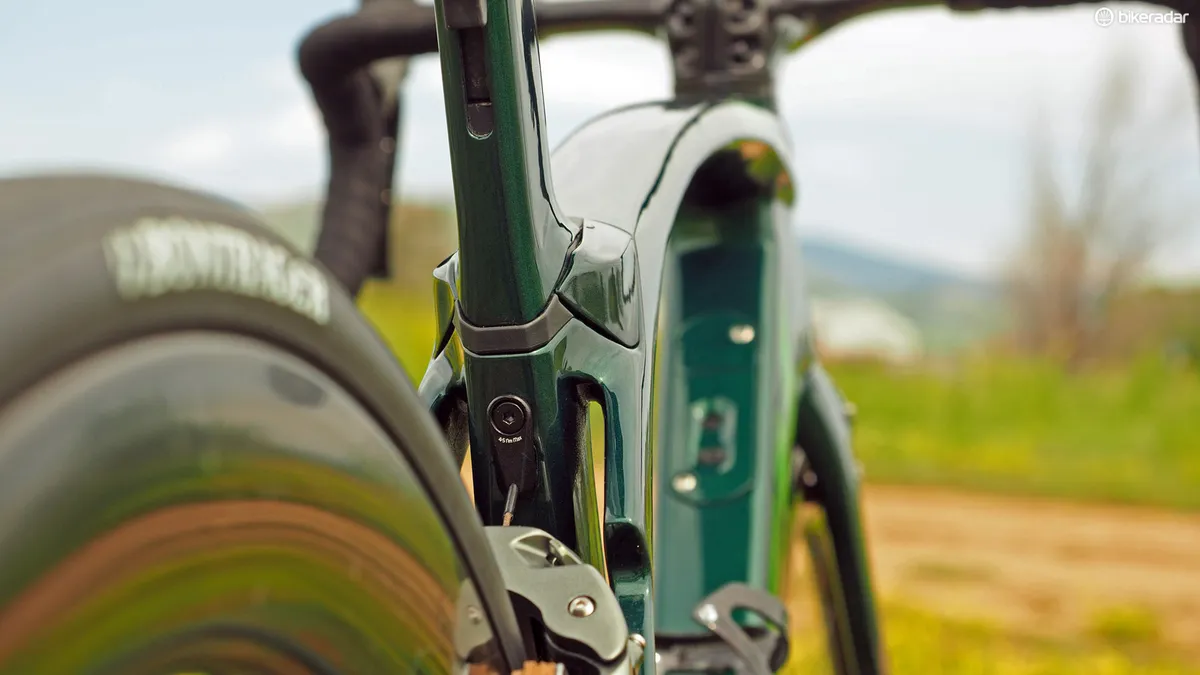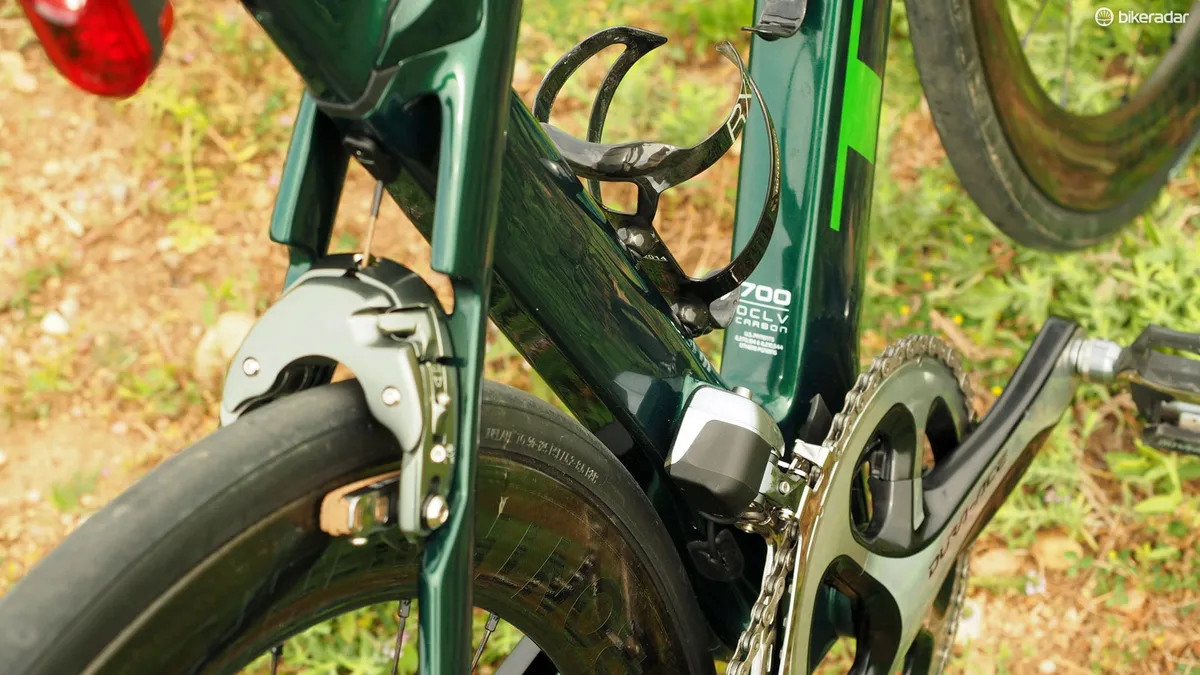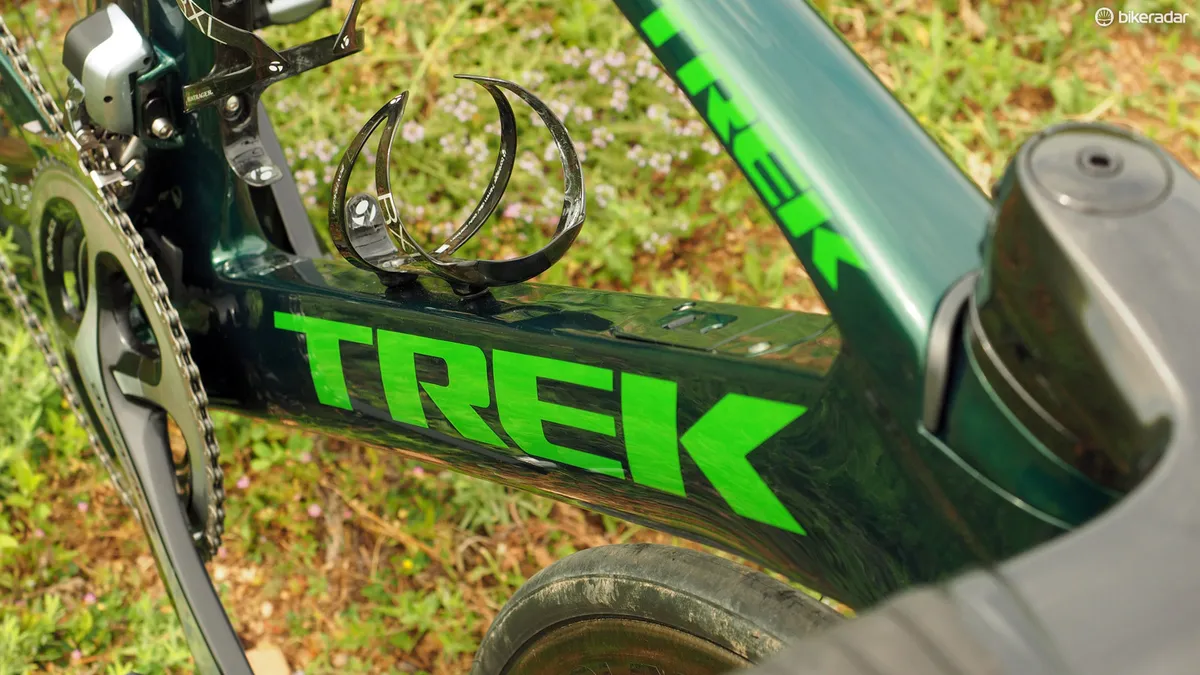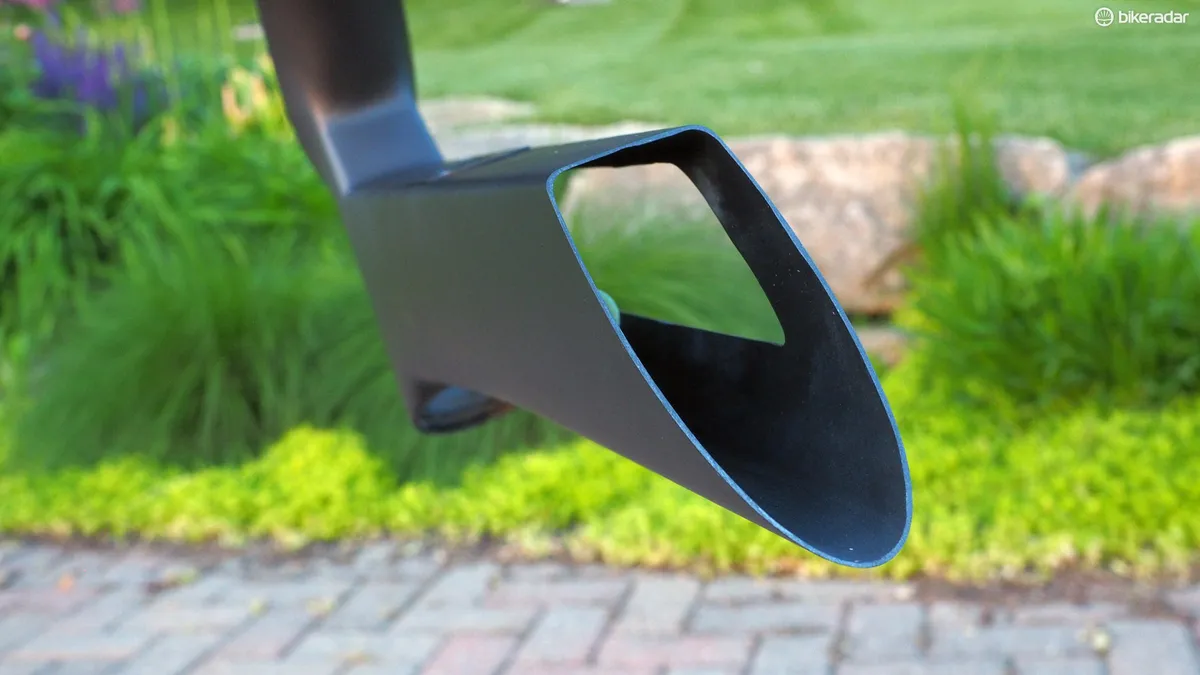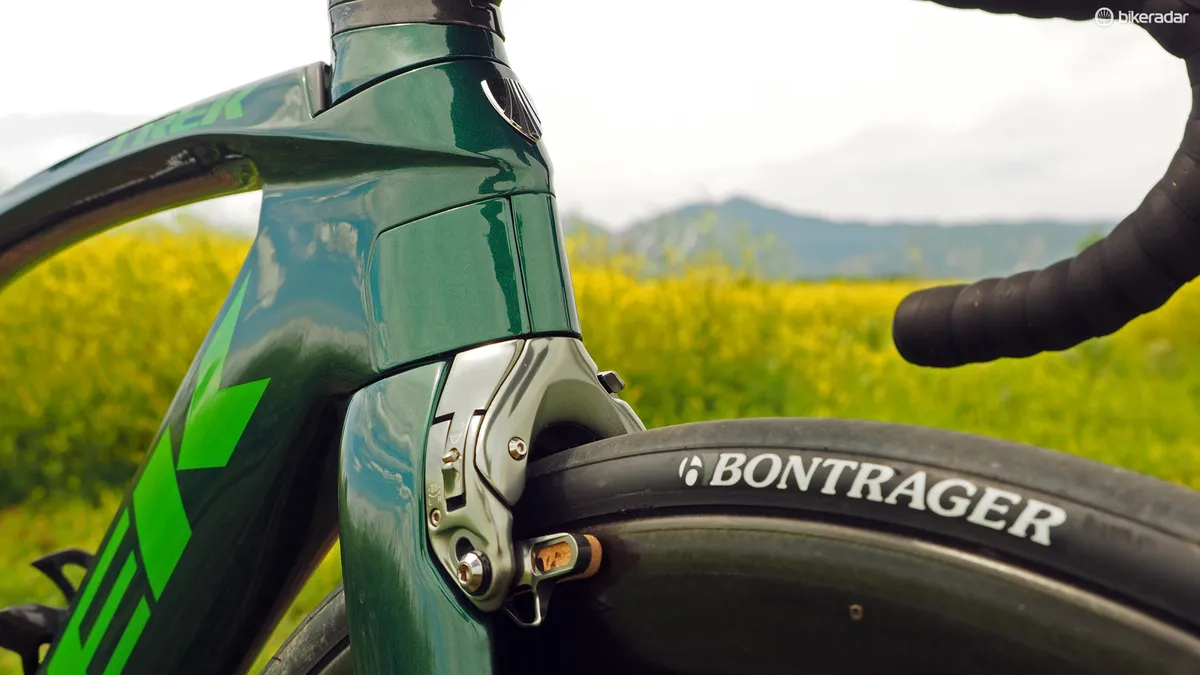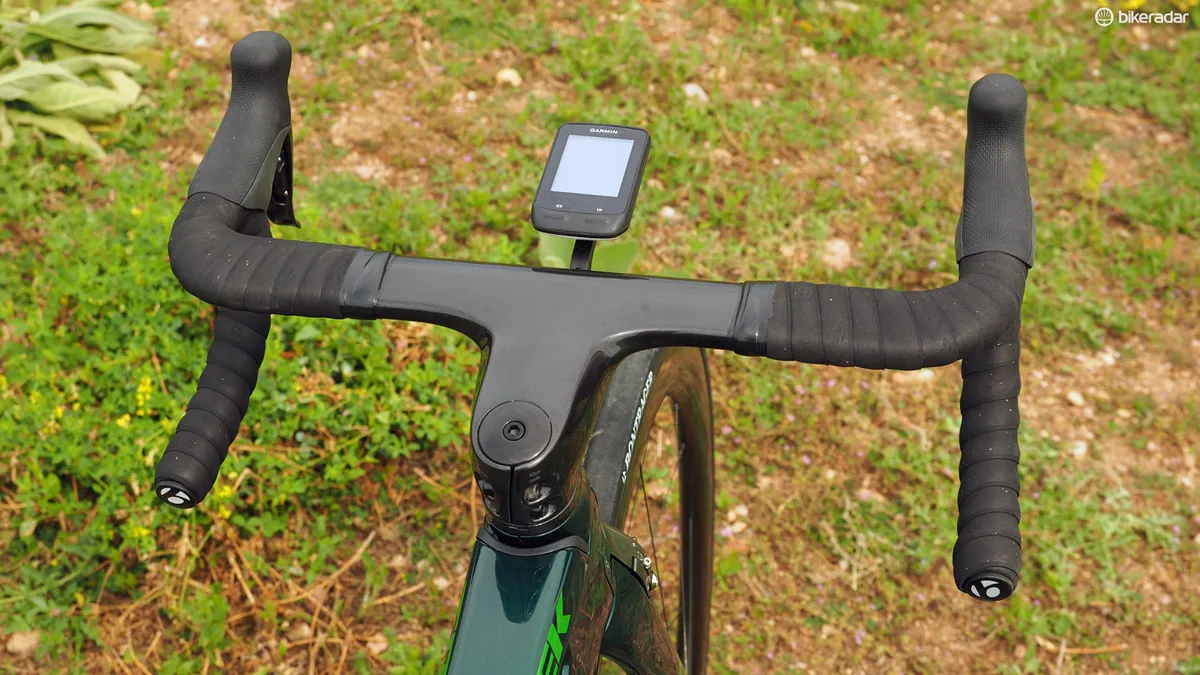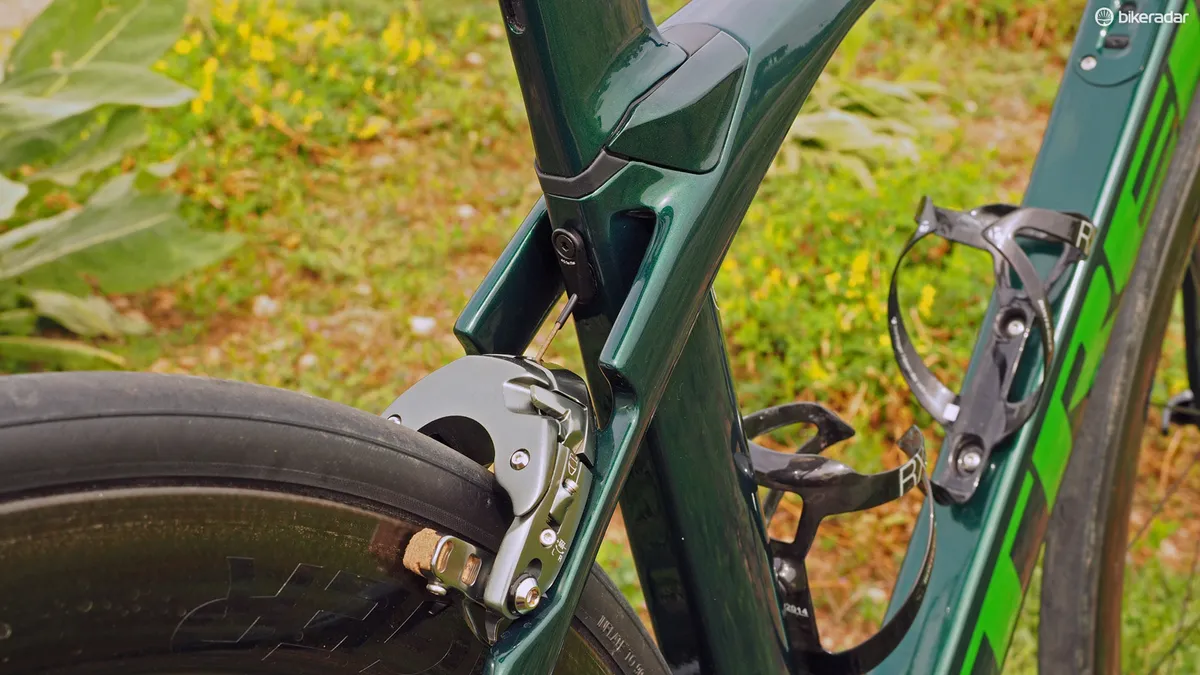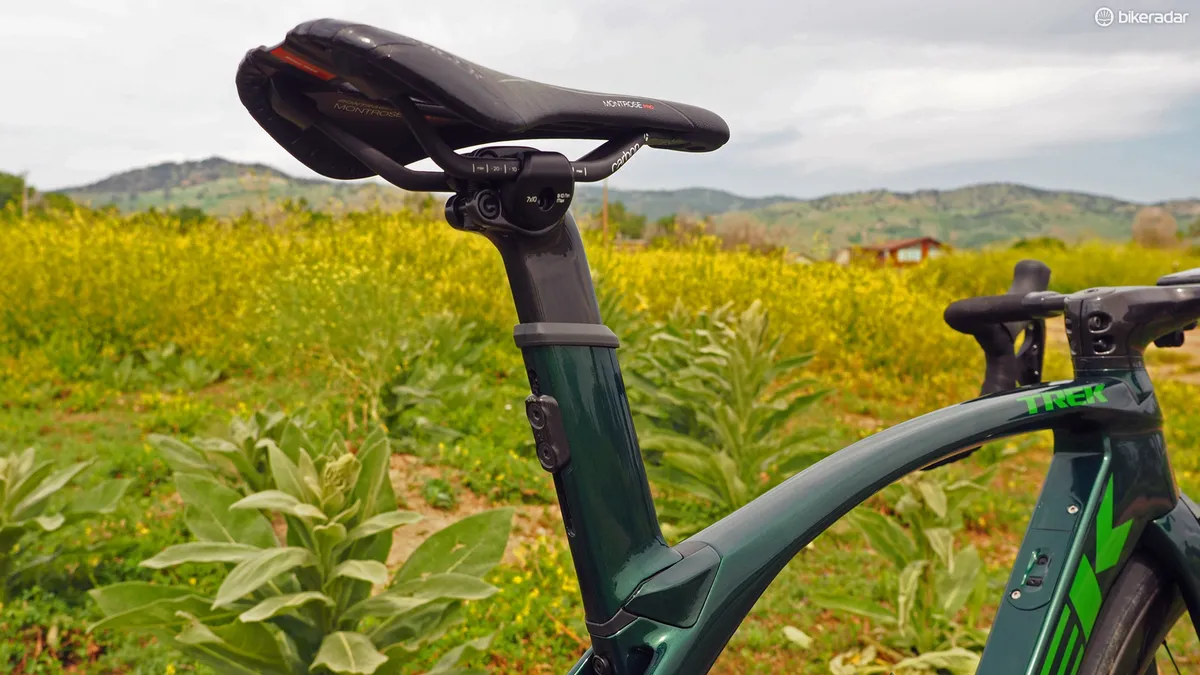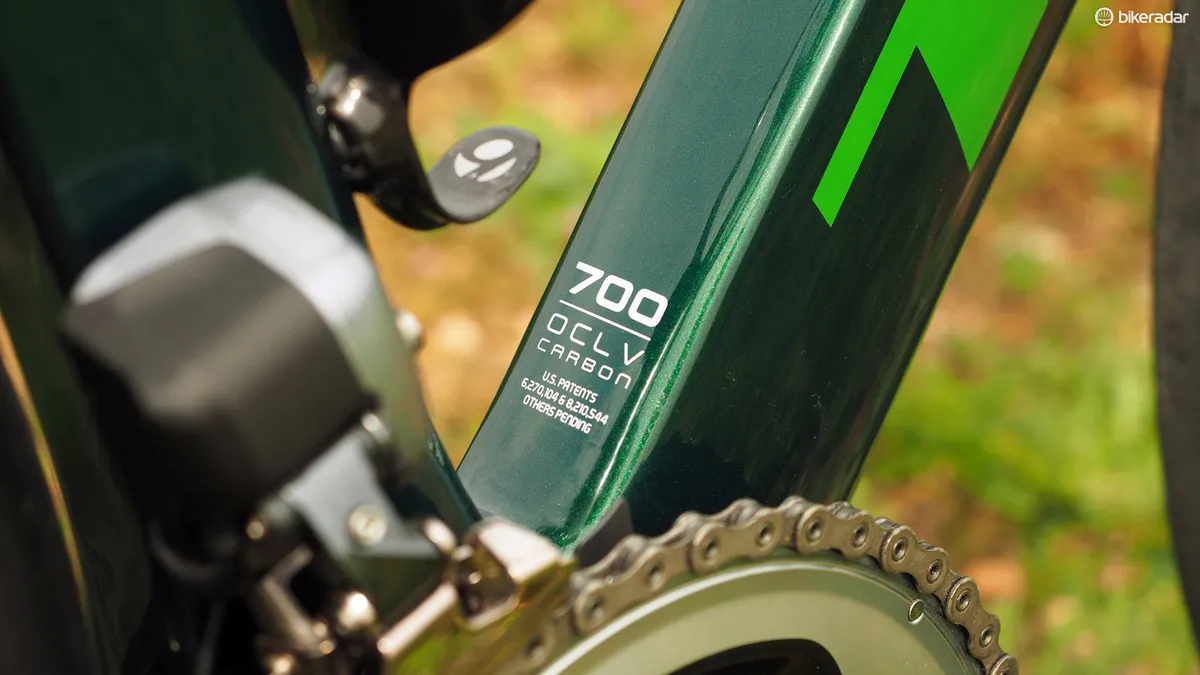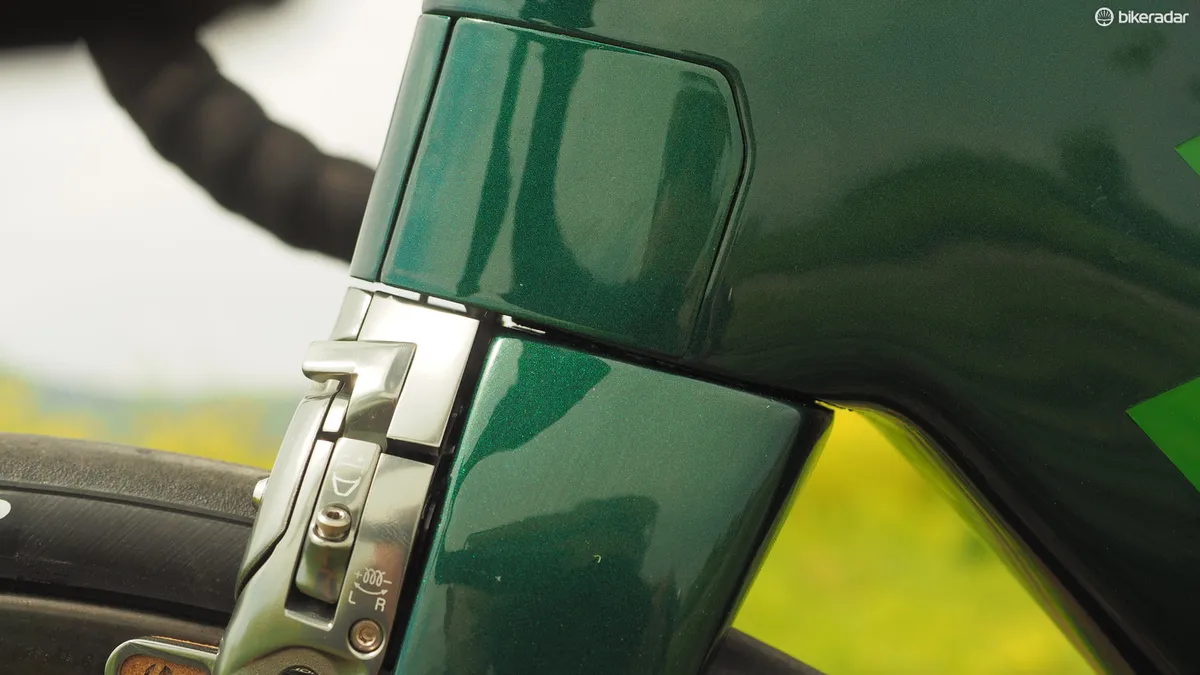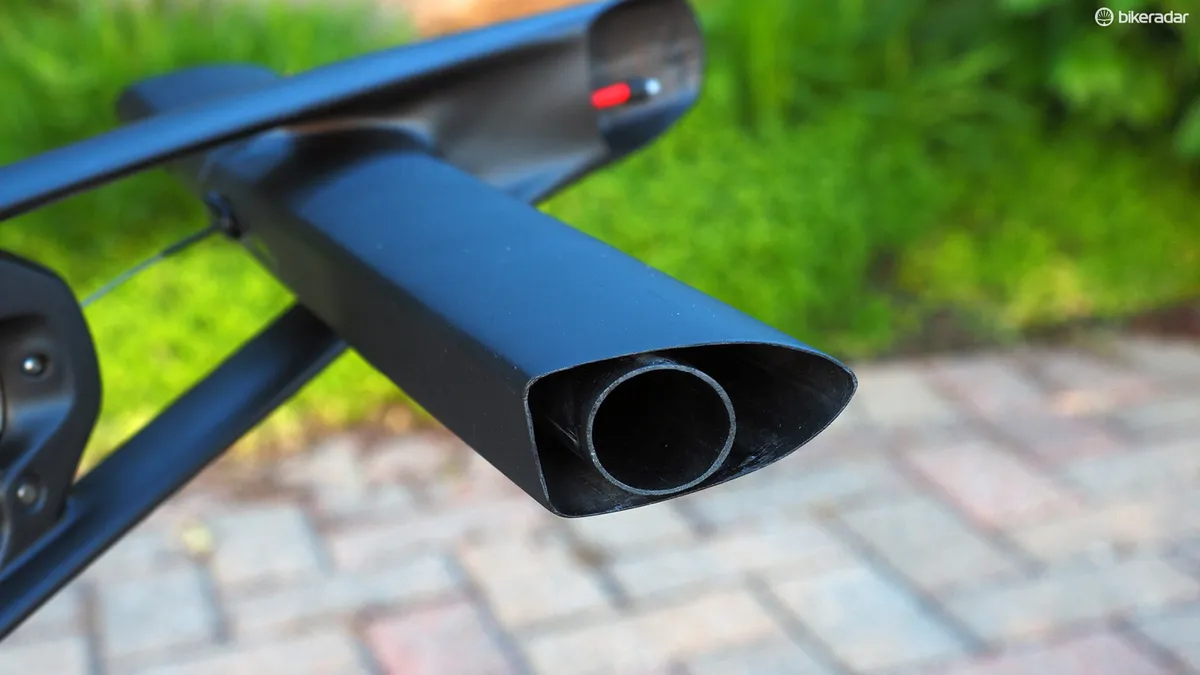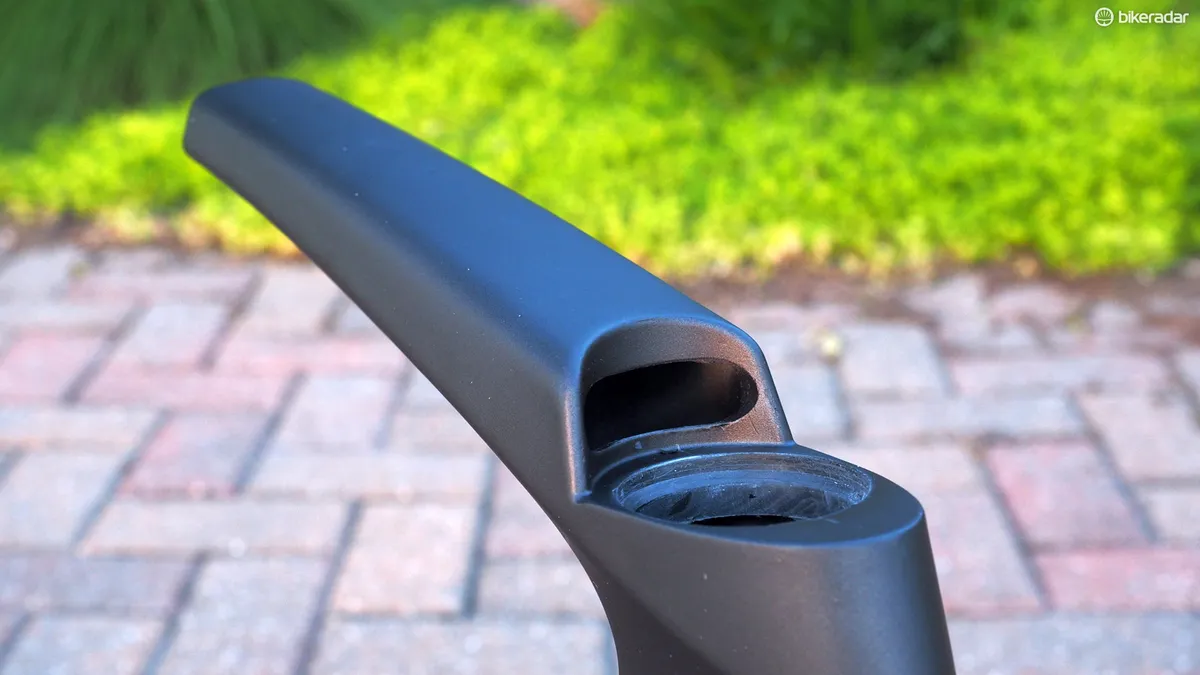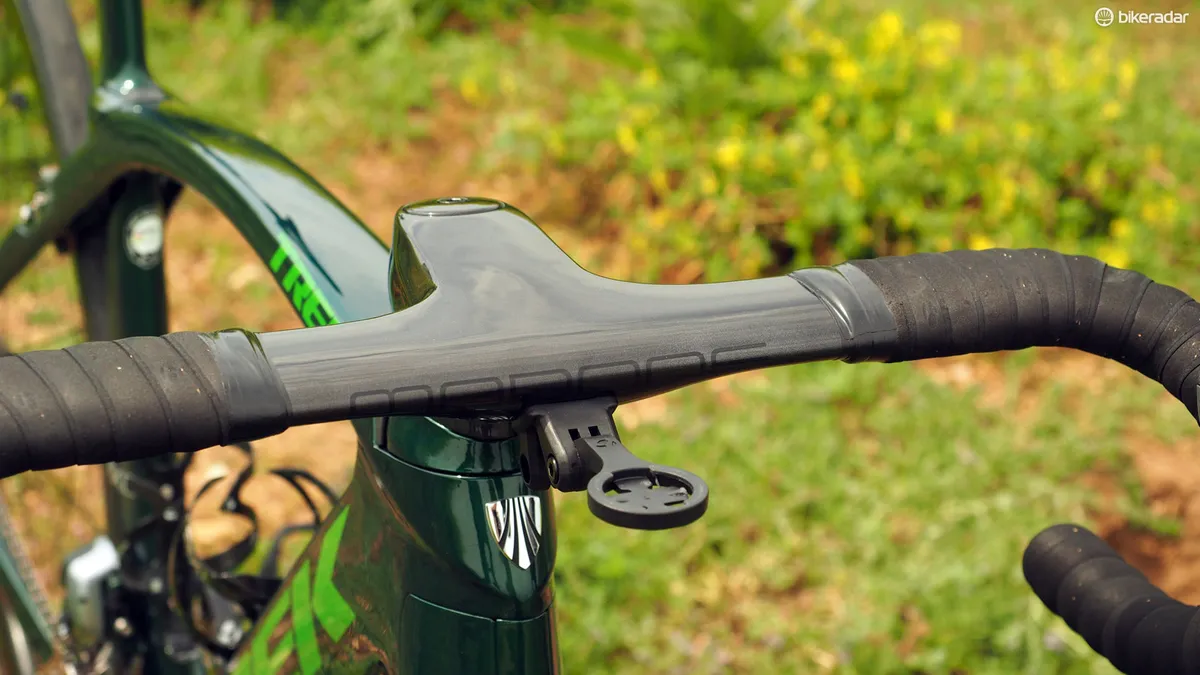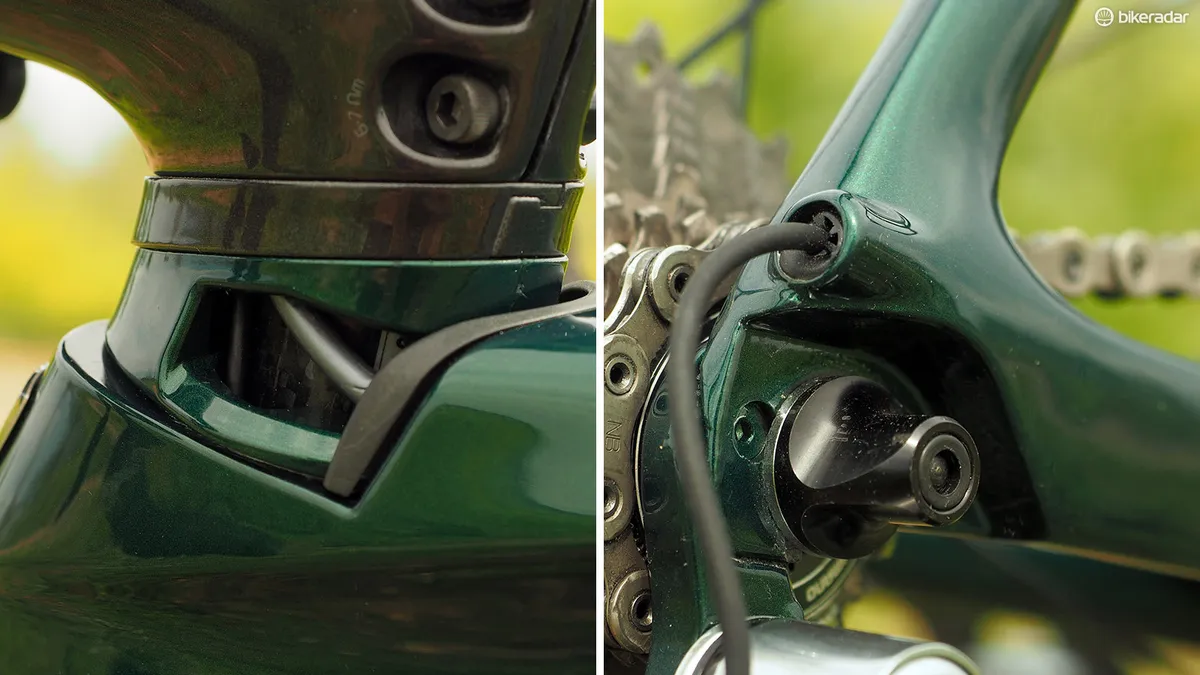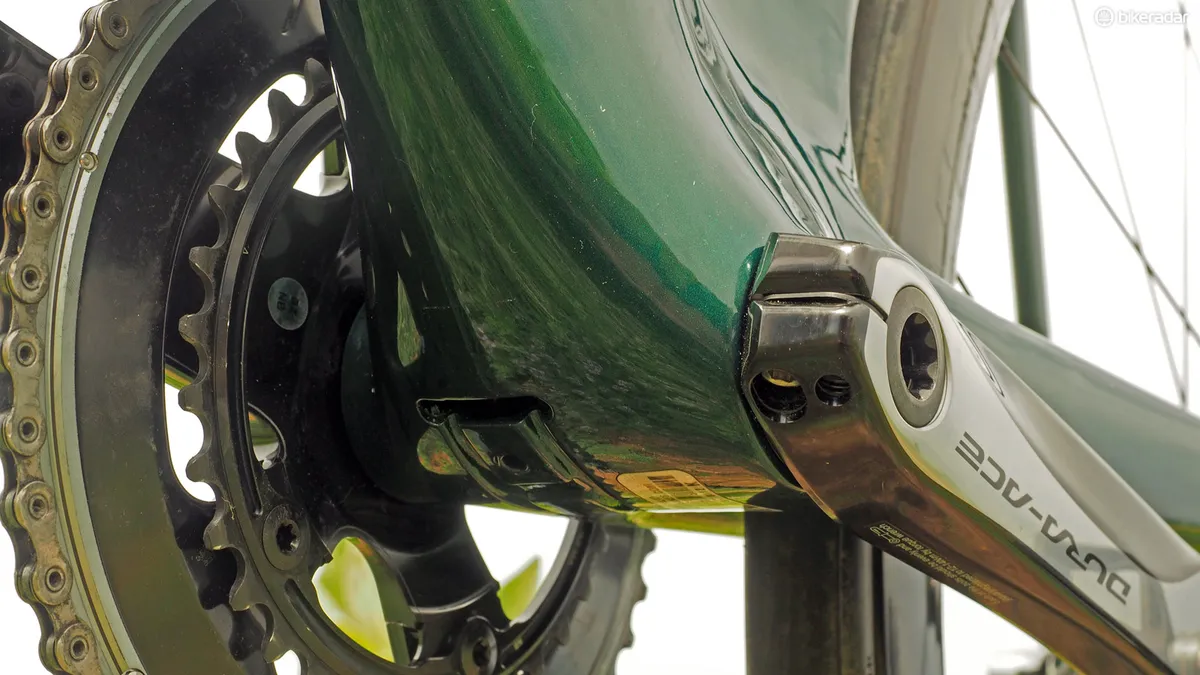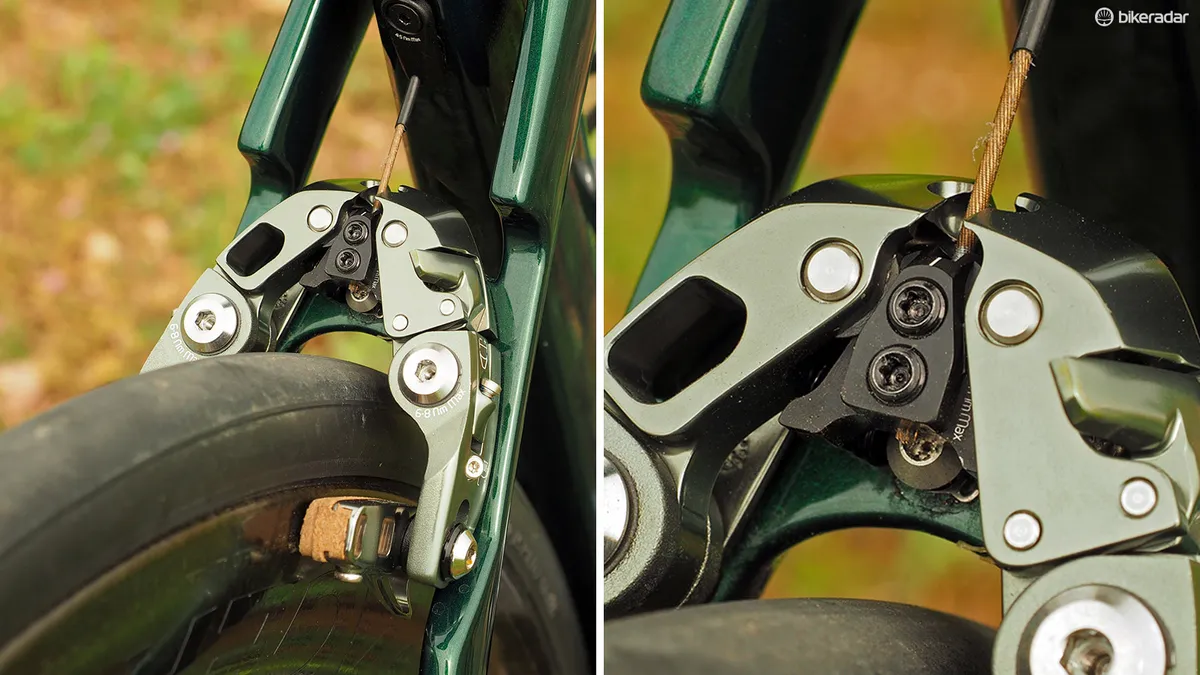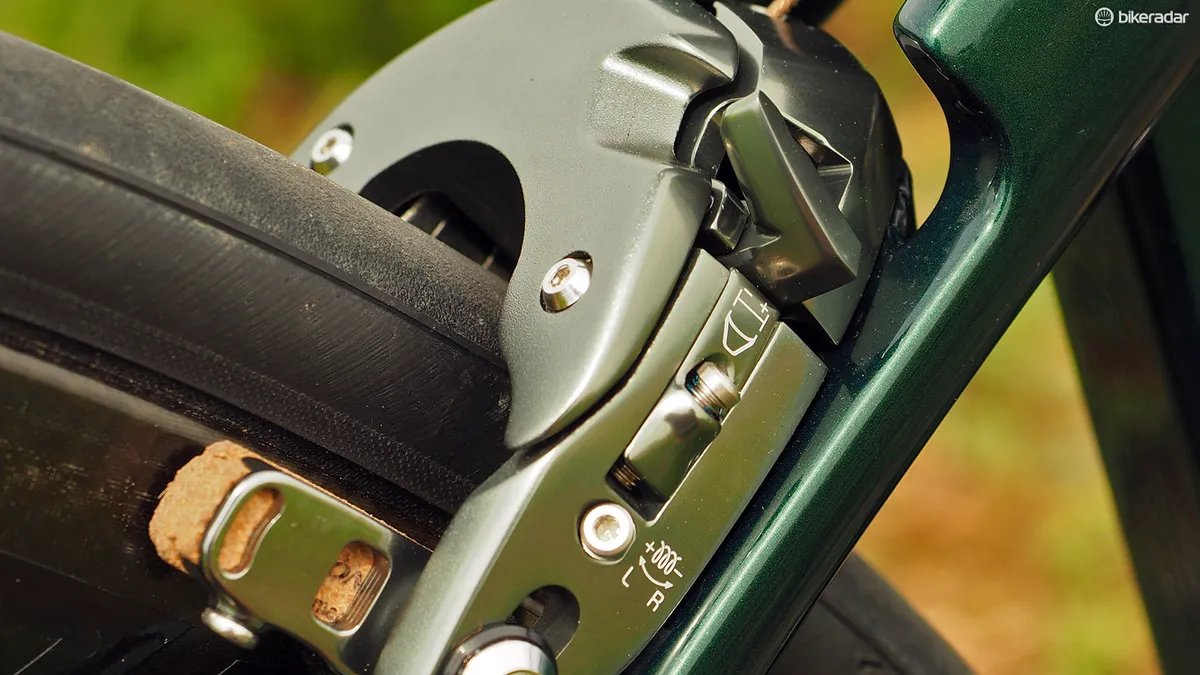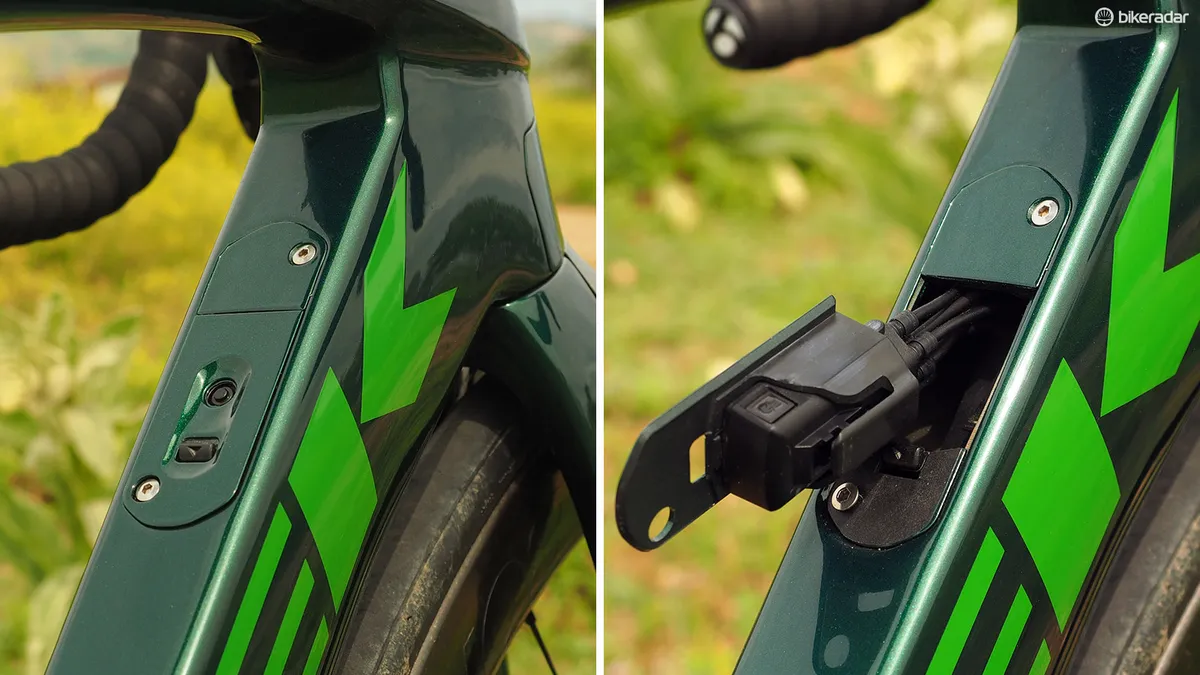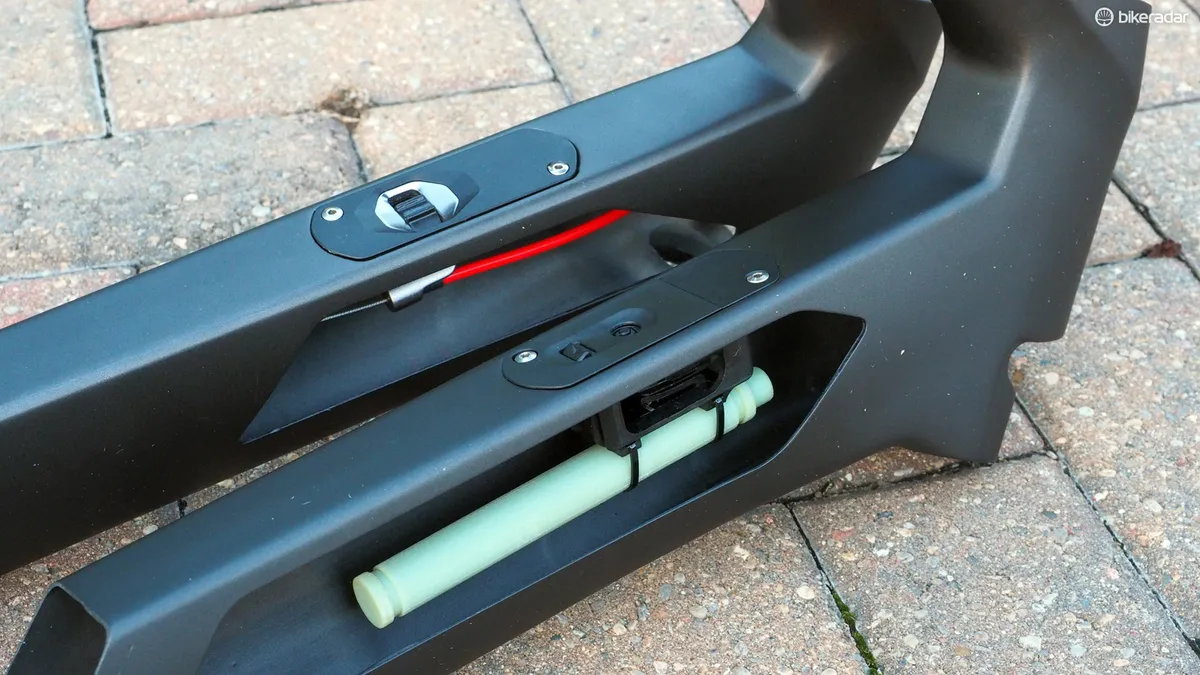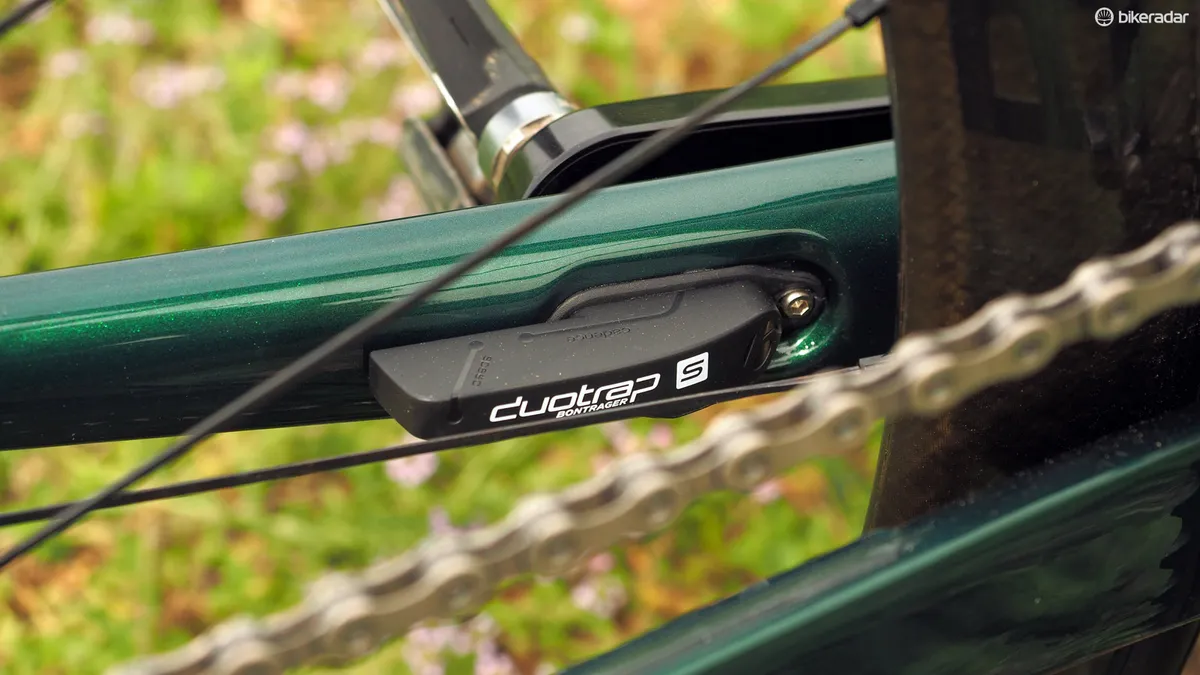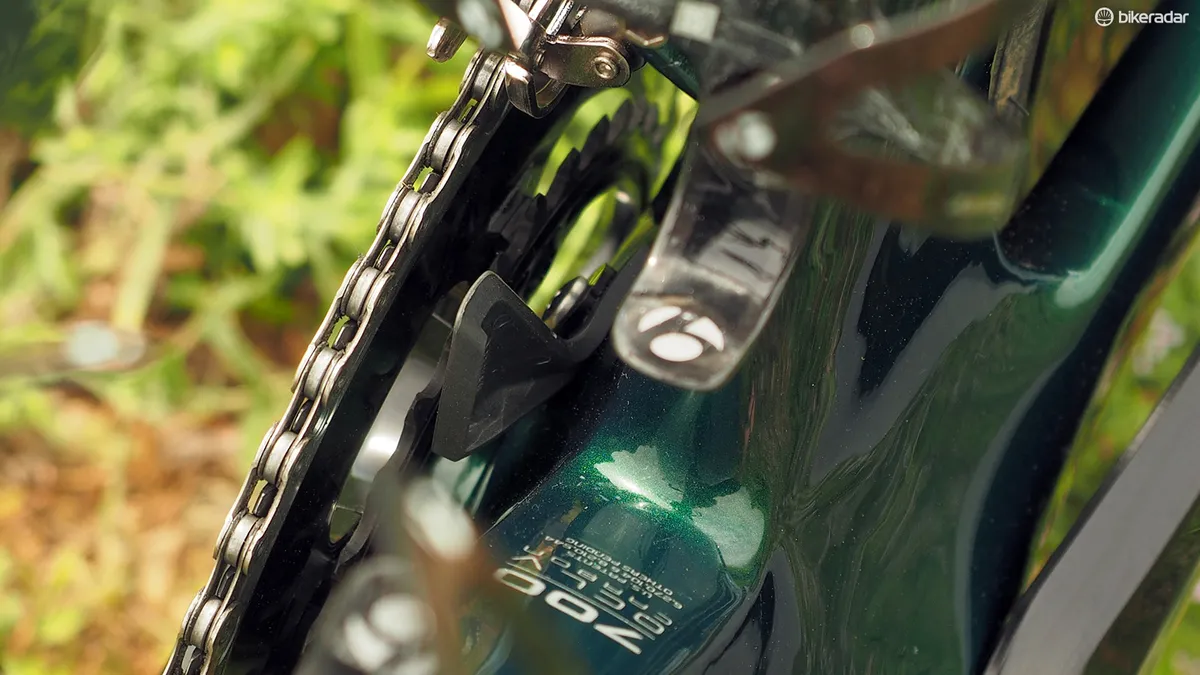Aero road bikes might slice through the air with relative ease but as a category, they’re not exactly known to be comfortable or light. The new Trek Madone 9 Series should go a long way toward dispelling that reputation with a super sleek and comparatively feathery chassis that’s not only fast but freakishly cushy on rough roads, too. We’ve only logged a few hundred miles on our long-termer so far but initial impressions are extremely favorable.
- Highs: Cuts faster through the wind but without beating you up along the way, fantastic handling, still impressively light
- Lows: At least interest rates on second mortgages are still low
- Buy if: You want to get there in less time but still want to be able to ride the next day, too
Read and see the video of the Madone 9 Series' finer details here.
Fast and smooth
The first two rides on this bike were on the ‘dairy roads’ surrounding Trek’s global headquarters in Waterloo, Wisconsin. It’s a seemingly endless expanse of sinuous tarmac that’s gloriously free of traffic but also relatively coarsely paved with plenty of frost heave and other imperfections that often seemed perfectly sized to swallow a road tyre – not exactly an ideal proving ground for a bike that’s anything less than smooth.

Such deep-profile tubes wouldn't normally suggest a smooth ride but the new Madone is remarkably comfy
But alas, the new Madone isn’t just comfortable “for an aero road bike” but comfortable, period – no caveats required. Despite appearances to the contrary, the deep-section carbon frame ably damps road buzz but it also rounds off bigger and harsher bumps in a way usually only expected of more traditionally shaped bikes.
It doesn’t take long before you how you’re seeing all of those bumps but not really feeling them through the rear end – and in fact, I even found myself consciously aiming for stuff I would normally avoid if only just for the novelty. Credit goes entirely to Trek’s awesome IsoSpeed ‘decoupler’ – a mechanical pivot at the seat tube-top tube intersection – and the Madone’s clever dual, nested seat tube design that, in combination, allows for much more flex at the saddle than you’d otherwise get out of a more traditional frame.

Trek's excellent IsoSpeed 'decoupler' strikes again, and to great effect
Unlike on Trek’s similarly IsoSpeed-equipped Domane endurance platform, which incorporates an even cushier rear end but can sometimes feel somewhat harsh up front, the new Madone delivers up a more balanced and cohesive feel front to rear. It might not be as comfortable out back as a Domane but then again, as a full-blown race bike, it should be firmer and more communicative.
That all said, riders interested in an aero road bike aren’t going to be considering ride quality as their primary metric – we’re talking about free speed, after all, and this new Madone seems to have that in spades, too. We haven’t had a chance to verify Trek’s drag claims – specifically ones comparing it to its major competition – but repeated runs on my regular fast-and-flat test loops surrounding BikeRadar’s US offices in Boulder, Colorado have certainly returned consistently lower times relative to non-aero machines. As expected for this segment, the chassis is plenty stiff, too.

The front end is fantastically sleek
Helping matters further is the Madone’s impeccable handling. A slight variation from Madones of yesteryear – and identical to the current Emonda – this new Madone 9 Series is nevertheless equally adept at carving up sinuous mountain descents or gobbling up long stretches of straight road, feeling utterly composed and competent throughout.
Reigning it in
Boulder isn’t exactly known for being flat, however, and the countless canyon roads to the west also demand plenty of braking. Thankfully, the new Madone’s proprietary center-pull rim brakes are not only cleanly integrated into the frame and fork for aero purposes but they also work well – a good thing since there are no other options.
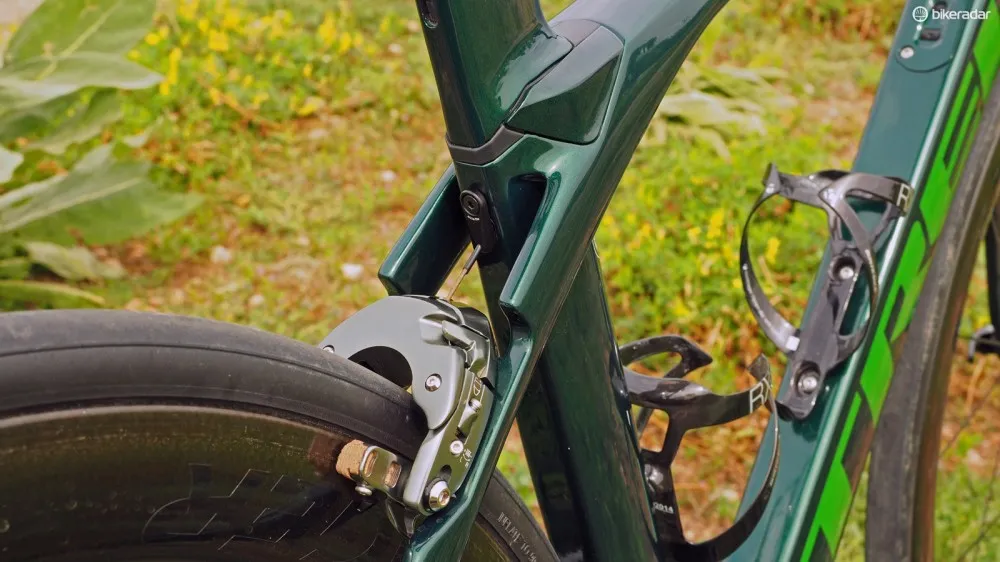
The dedicated centerpull brakes work well with generous power and control, plus fantastic lever feel
Caliper flex is practically nonexistent thanks to short and compact aluminium arms and a fully boxed-in layout that bridges the ends of the direct-mount pivots. Meanwhile, the cable wedge moves on rollers while both pivots are fitted with cartridge bearings to return a silky smooth and light lever feel that’s noticeably devoid of excess friction.
Total braking power leaves a little to be desired with the Bontrager carbon-specific cork pads included here and they’re also prone to squealing but modulation is very good. We’ll likely switch to a set of SwissStops as the long-term testing progresses.
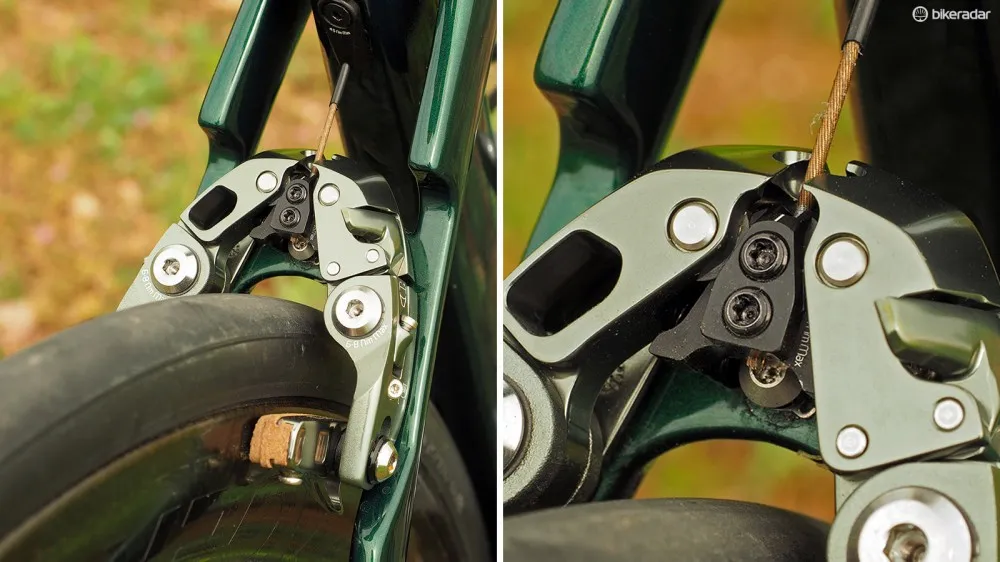
A look at the inner workings
Clearance is great, too. Trek officially says the new Madone will swallow tyres up to 28mm wide and rims up to 30mm wide (external measurement), depending on the exact combination.
Sweating the details
Another usual pitfall of proprietary componentry is lack of compatibility. In that sense, there’s no grand departure here as the Madone’s dedicated aero-profile one-piece carbon fibre bar and stem won’t work with aftermarket computer or camera mounts, and the similarly aero-profile no-cut extended seatmast won’t take anything other than the dedicated Bontrager head.
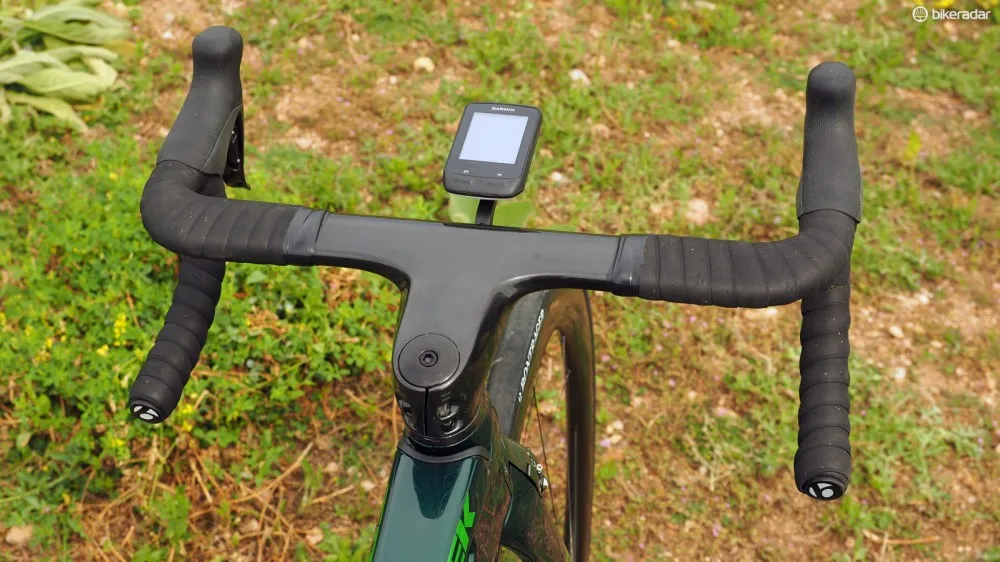
The aero cockpit is actually quite comfy to hold
But on the upside, Bontrager has at least given the cockpit an agreeable shape with versatile semi-anatomic drops and flattened tops that you can still comfortably wrap your hands around. And while Trek says it’s faster to leave the tops untaped, the subtle ‘Madone’ graphics are sized such that you can still wrap them up as usual without looking funny.
Likewise, there may not be much in the way of seatpost options but at least the one included is easy to live with. Bontrager’s updated head design now features truly independent tilt and fore-aft adjustments, and so far, it’s held rock solid.
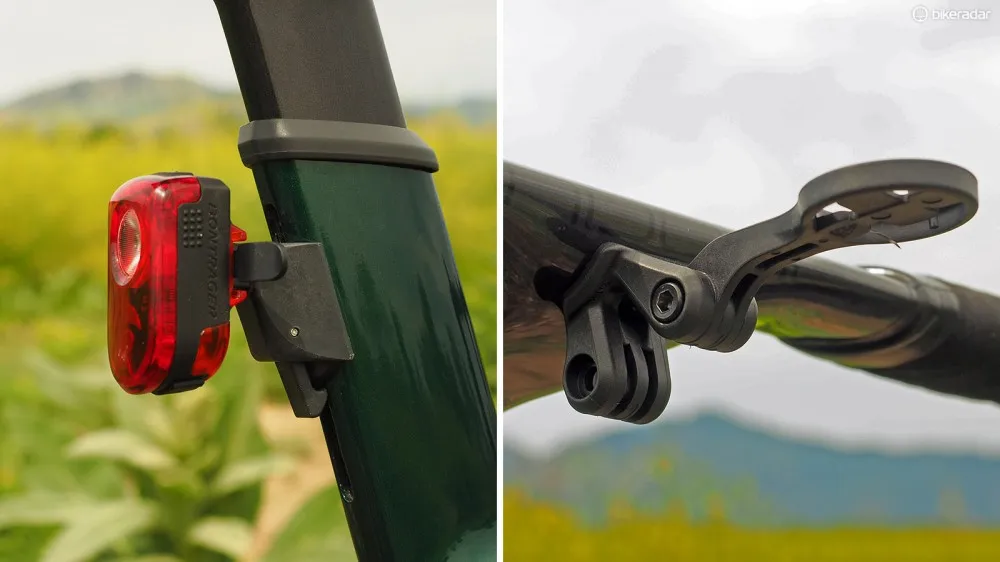
Custom mounts are included for lights, computers, and cameras
And as for accessories, Trek even includes custom mounts for computers, cameras, and lights for the cockpit and seatmast – meaning you can still attach your favorite gadgets but won’t have to look at any unsightly clamps or rubber straps.
Such an obsessively hidden internal cable routing setup – it’s all fully concealed save for a short section of wire for the rear derailleur – is certainly going to be more challenging to service when the time comes but Trek has at least made bar height adjustments less painful. As compared to other similar setups that require a full recabling, Trek has cleverly fitted the new Madone with custom split headset spacers.
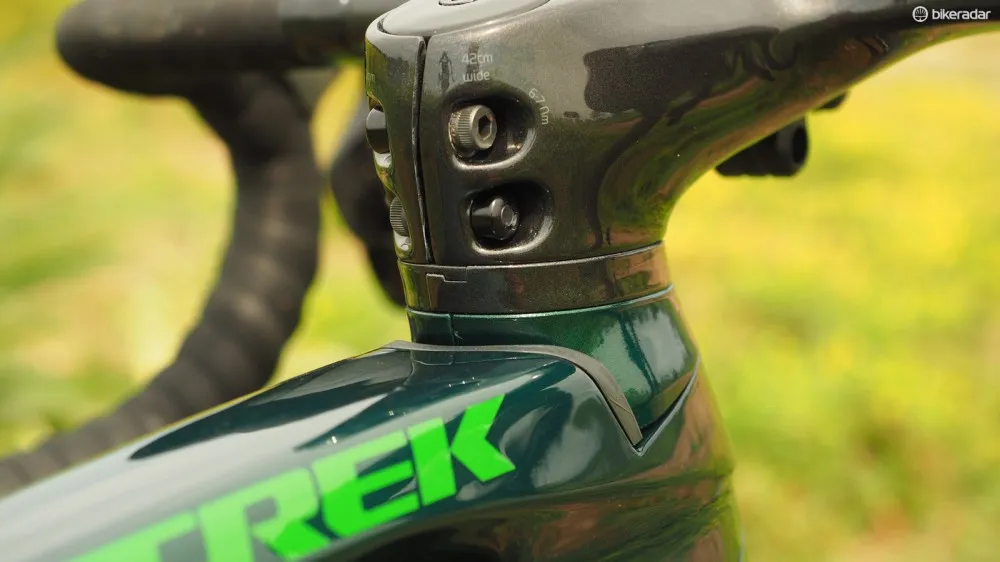
Split headset spacers should make for relatively easy height adjustments
Unflappable build kit
Trek will initially offer the Madone 9 Series in several standard builds but BikeRadar got an early sneak preview at the upcoming Project One custom version – which, in this case, doesn’t stray far off the beaten path in terms of components or wheels but definitely goes off-center visually with a very non-standard green-on-green paint scheme.
There’s not much that needs to be repeated on the Shimano Dura-Ace Di2 group: it’s functionally without fault with perfect shifts each and every time. It’d still be nice to have some more tactile feedback from the shift buttons but that’s still a matter of personal preference.

As usual, the Shimano Dura-Ace Di2 transmission is superb
Bontrager’s latest Aeolus 5 D3 TLR tubeless-compatible carbon clinchers are proving to be great all-rounders, too, with a newly widened tyre bed that mates well with the 25mm-wide Bontrager R4 tyres used here. As we’ve noted before, the blunt, 50mm-deep rim shape is fast yet manageable in strong crosswinds. Their weight is also quite good although as with all tubeless-compatible Bontrager hoops, the chunky molded plastic rim strips add nearly 100g per set.
All told, this 52cm H1 test sample came in at just 6.79kg (14.97lb) without pedals or bottle cages.
Raising the bar
Overall, Trek’s new Madone 9 Series is off to a fantastic start to its long-term test: it’s fast, remarkably comfortable, and easy to live with. Unfortunately, the prices have climbed in lockstep with the technology but at least Trek will offer several somewhat more reasonable options with identical shaping but lesser build kits.
Not all riders will feel any burning need to go aero but when that extra speed comes with so few compromises, the arguments against it certainly become less compelling. Ever-increasing retail costs? That gets a big ‘boo’ from this end but the idea that aero road bikes can also just be really good road bikes in general is a trend I can get behind.
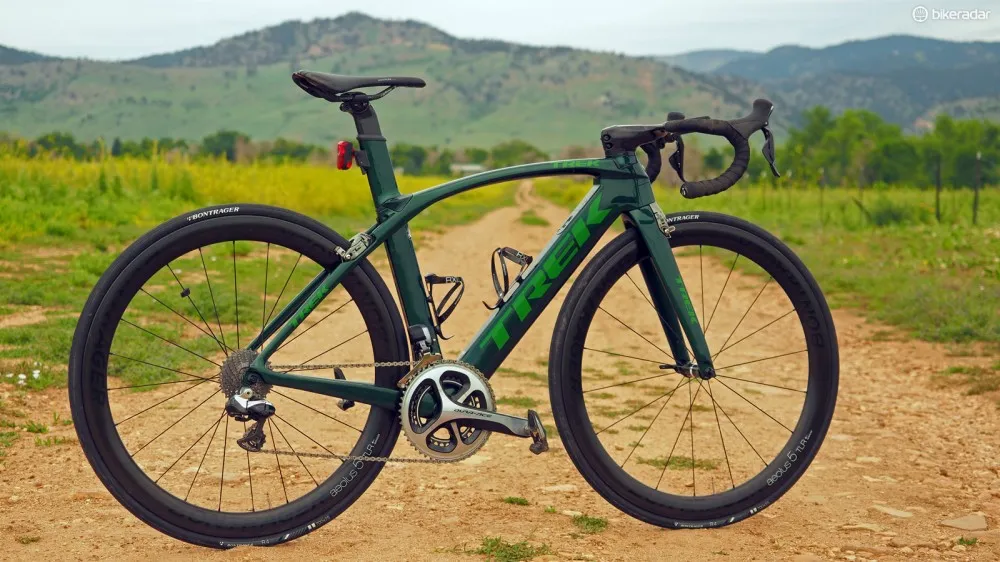
Faster, comfier, easier to live with
Complete bike specifications
- Frame: 2016 Trek Madone 9 Series, H1 geometry, 700-Series OCLV carbon fibre
- Fork: 2016 Trek Madone KVF
- Headset: Integrated
- Cockpit: Trek Madone integrated
- Bar tape: Bontrager gel cork
- Front brake: Trek Madone integrated w/ Bontrager carbon-specific pads
- Rear brake: Trek Madone integrated w/ Bontrager carbon-specific pads
- Brake levers: Shimano Dura-Ace Di2 STI Dual Control ST-9070
- Front derailleur: Shimano Dura-Ace Di2 FD-9070
- Rear derailleur: Shimano Dura-Ace Di2 RD-9070
- Shift levers: Shimano Dura-Ace Di2 STI Dual Control ST-9070
- Cassette: Shimano Dura-Ace CS-9000, 11-28T
- Chain: Shimano Dura-Ace CN-9000
- Crankset: Shimano Dura-Ace FC-9000, 50/34T
- Bottom bracket: Enduro
- Wheelset: Bontrager Aeolus 5 D3 TLR clincher
- Front tyre: Bontrager R4 clincher, 700x25c
- Rear tyre: Bontrager R4 clincher, 700x25c
- Saddle: Bontrager Montrose Pro
- Seatpost: Trek Madone 9 Series
- Weight: 6.79kg (14.97lb, without pedals or accessories)
For more information, visit www.trekbikes.com

